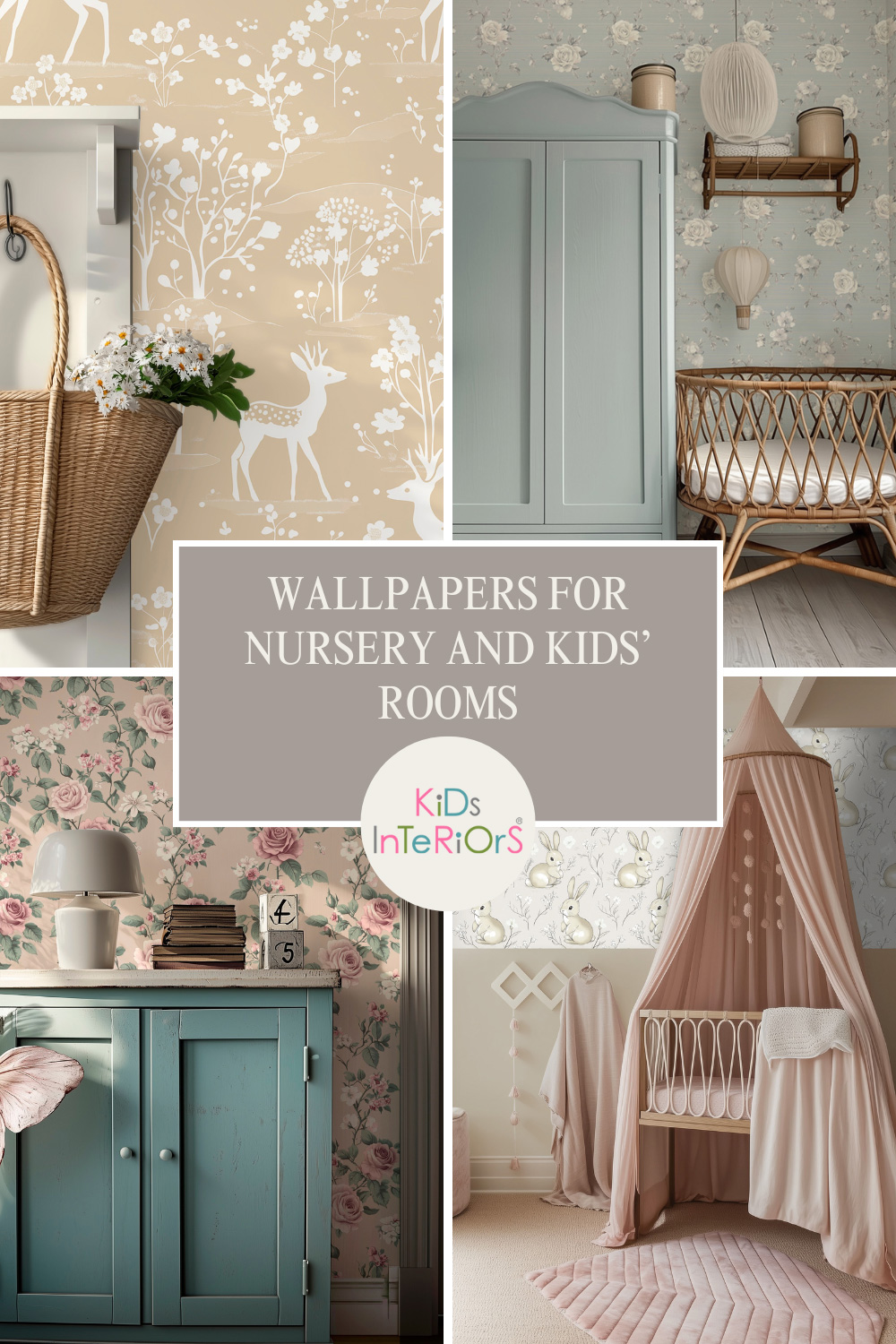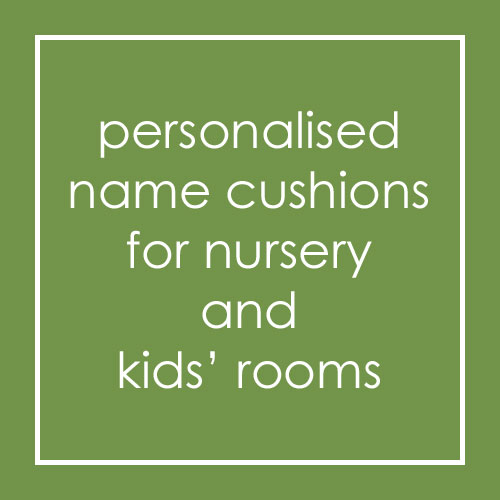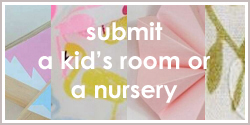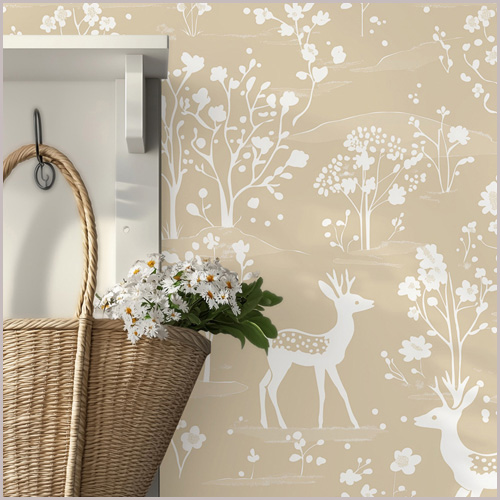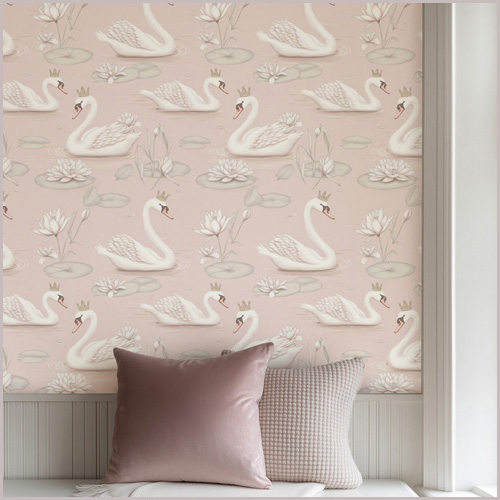Designing a space for your child that fosters learning and creativity is one of the most impactful ways to support their development. As parents and caregivers, we naturally want to create an environment that encourages growth, sparks curiosity, and nurtures a love for learning. A thoughtfully designed learning space can serve as a haven for your child, where they can explore new ideas, engage with their education, and feel empowered. When it comes to children’s rooms, combining functionality with inspiration is the key to fostering a well-rounded environment that motivates children to explore, learn, and grow.
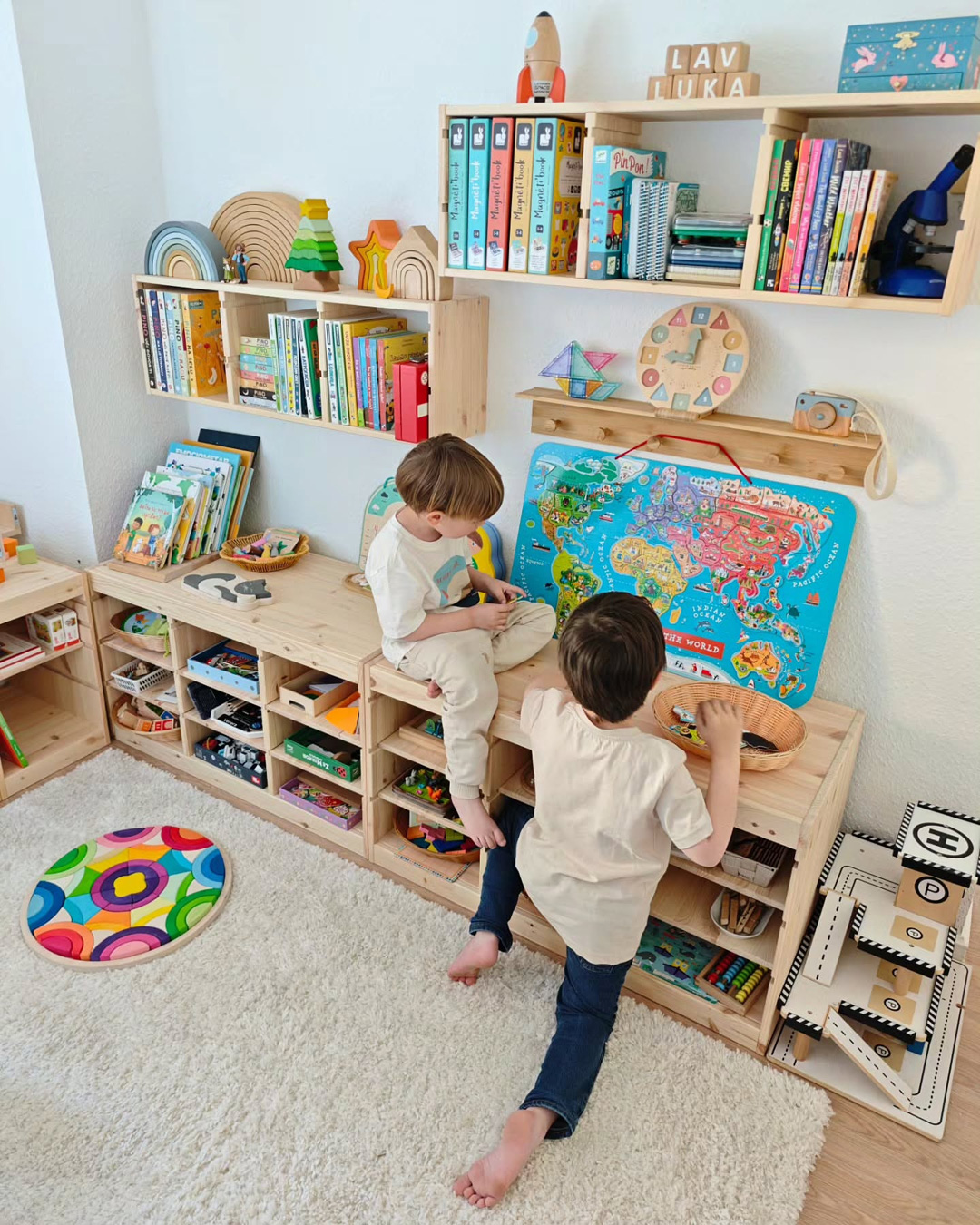
@_jovana.a__
The Power of Design in Learning
The way a room is designed influences a child’s mood and behavior. It has the power to inspire creativity, improve concentration, and even impact emotional wellbeing. A thoughtfully designed learning space can foster focus and productivity, which is essential for academic success and personal development. To begin, it’s important to create a space that aligns with your child’s personality and learning style. This will help ensure they feel comfortable, supported, and ready to engage with the learning process.
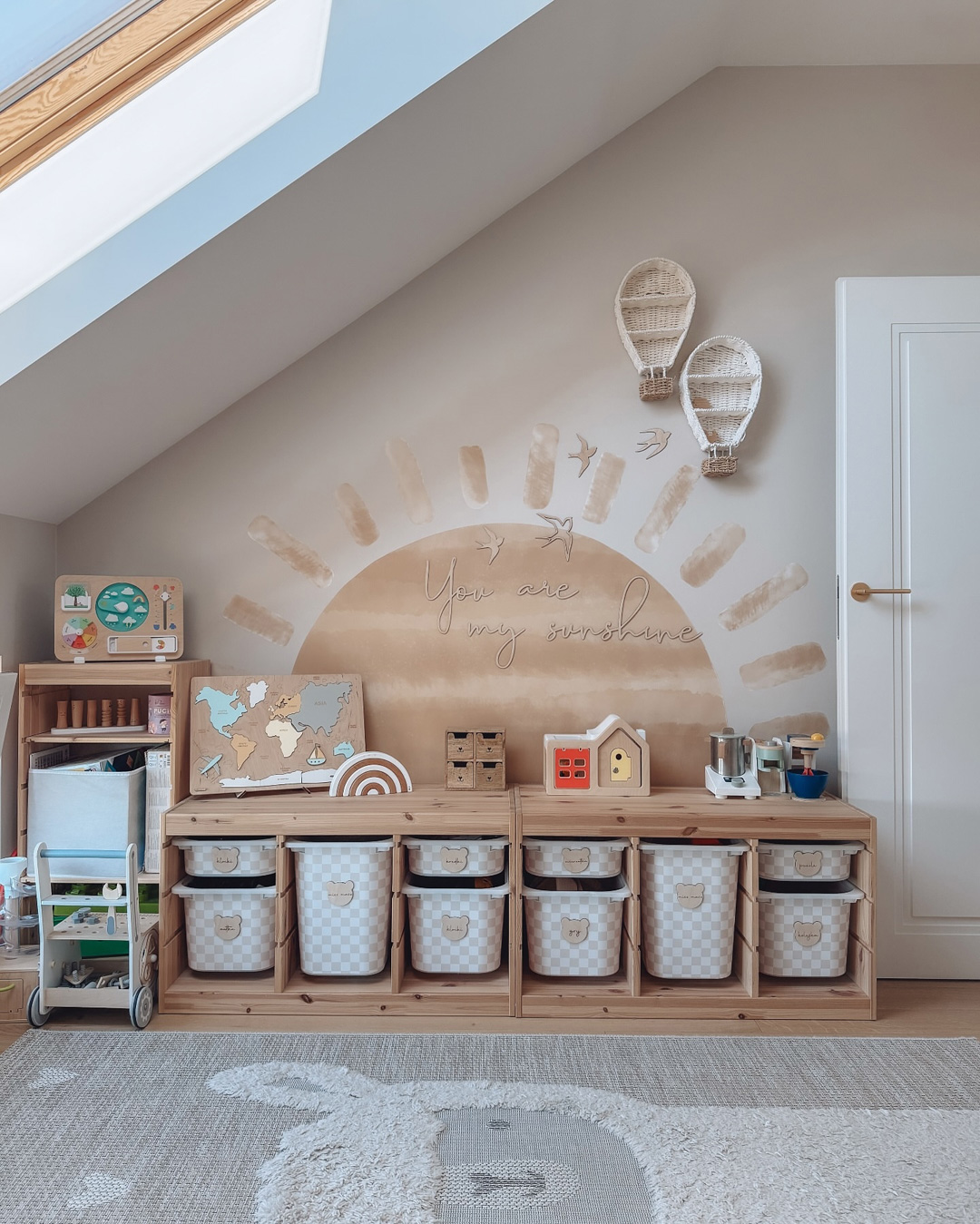
@_alannela.jpg
A great way to start is by incorporating books and worksheets for kids. Resources like these provide a structured way for children to engage with learning outside of formal school settings. Introducing materials that foster creativity and critical thinking can spark interest in subjects like history, economics, or science in a fun and interactive way.
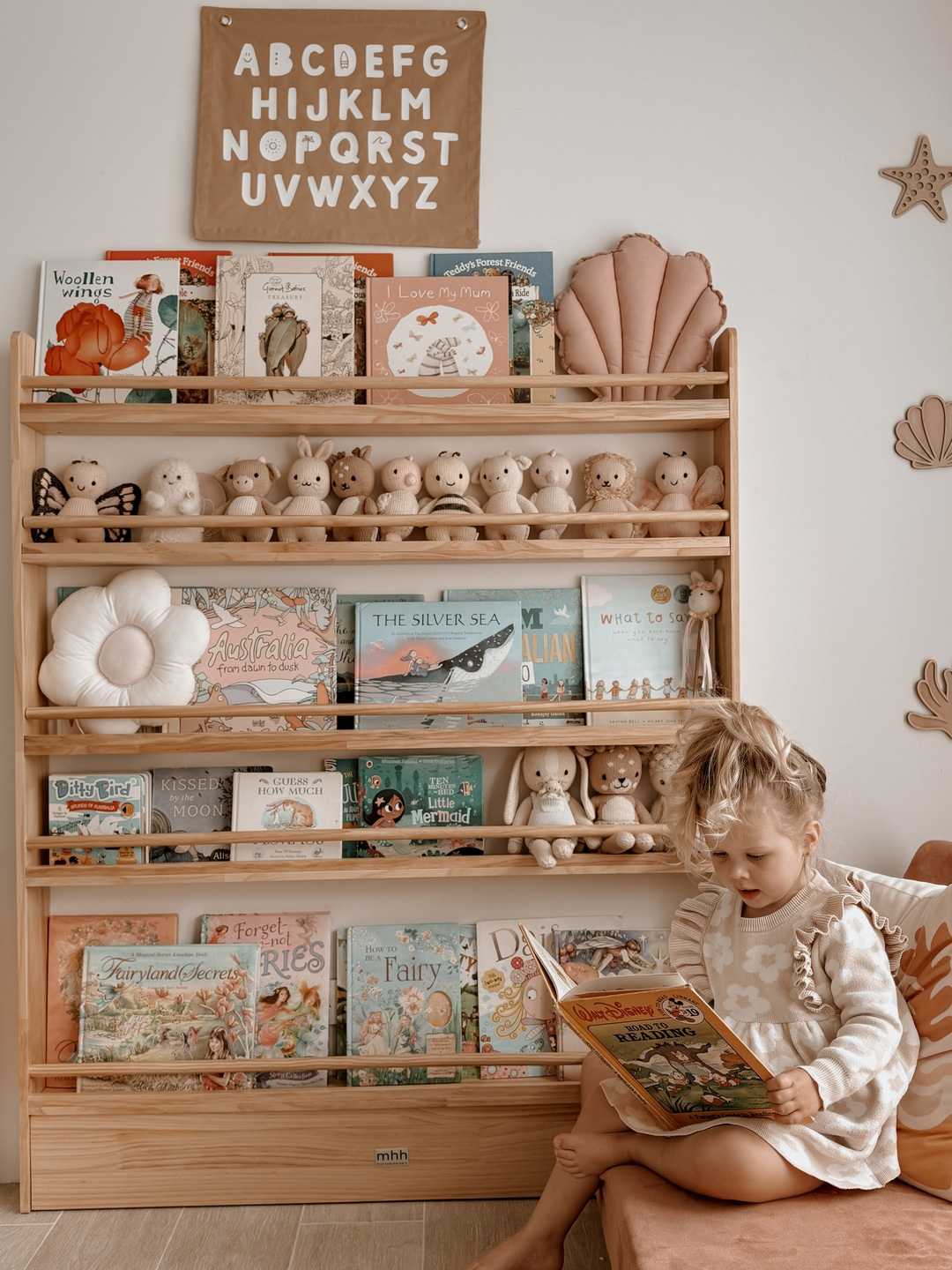
@myhappyhelpers
Consider Your Child’s Needs and Interests
The first step in designing a learning space is considering your child’s needs. Think about the subjects or activities they enjoy most. Is your child drawn to reading, drawing, or building? Their interests should play a significant role in shaping the room’s design. A reading nook, for example, could be a great way to create a space dedicated to books and imagination. If your child loves puzzles or building blocks, consider incorporating furniture and storage that allows for easy access to these educational toys.
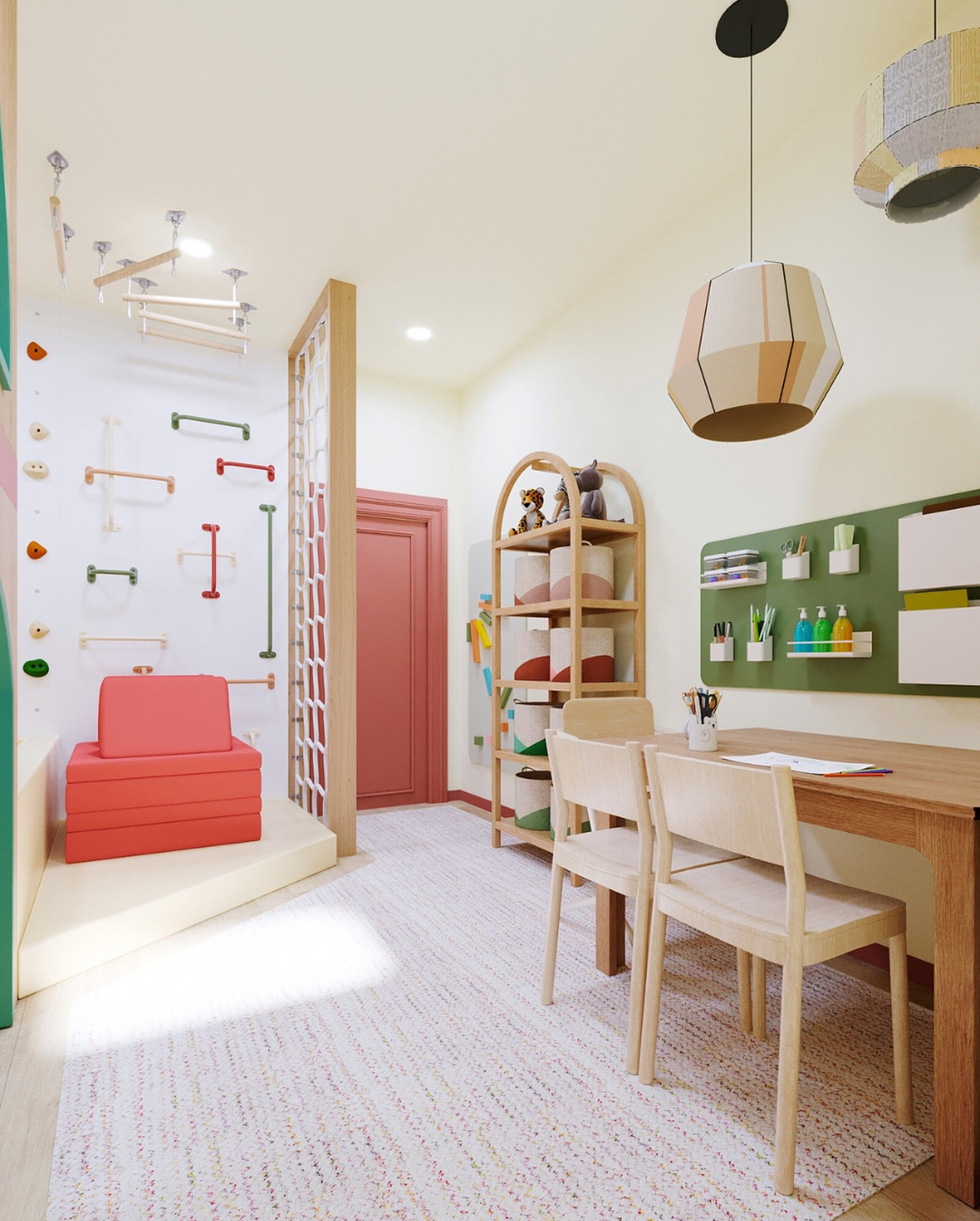
@grohplayrooms.jpg
In addition, be sure to consider your child’s age and developmental stage. For younger children, it’s essential to create a space where they can explore and experiment. Soft, safe materials, accessible toys, and space to move freely will support their cognitive and physical development. For older children, a study corner or desk area with easy-to-reach shelves and storage can encourage independent learning and focus.
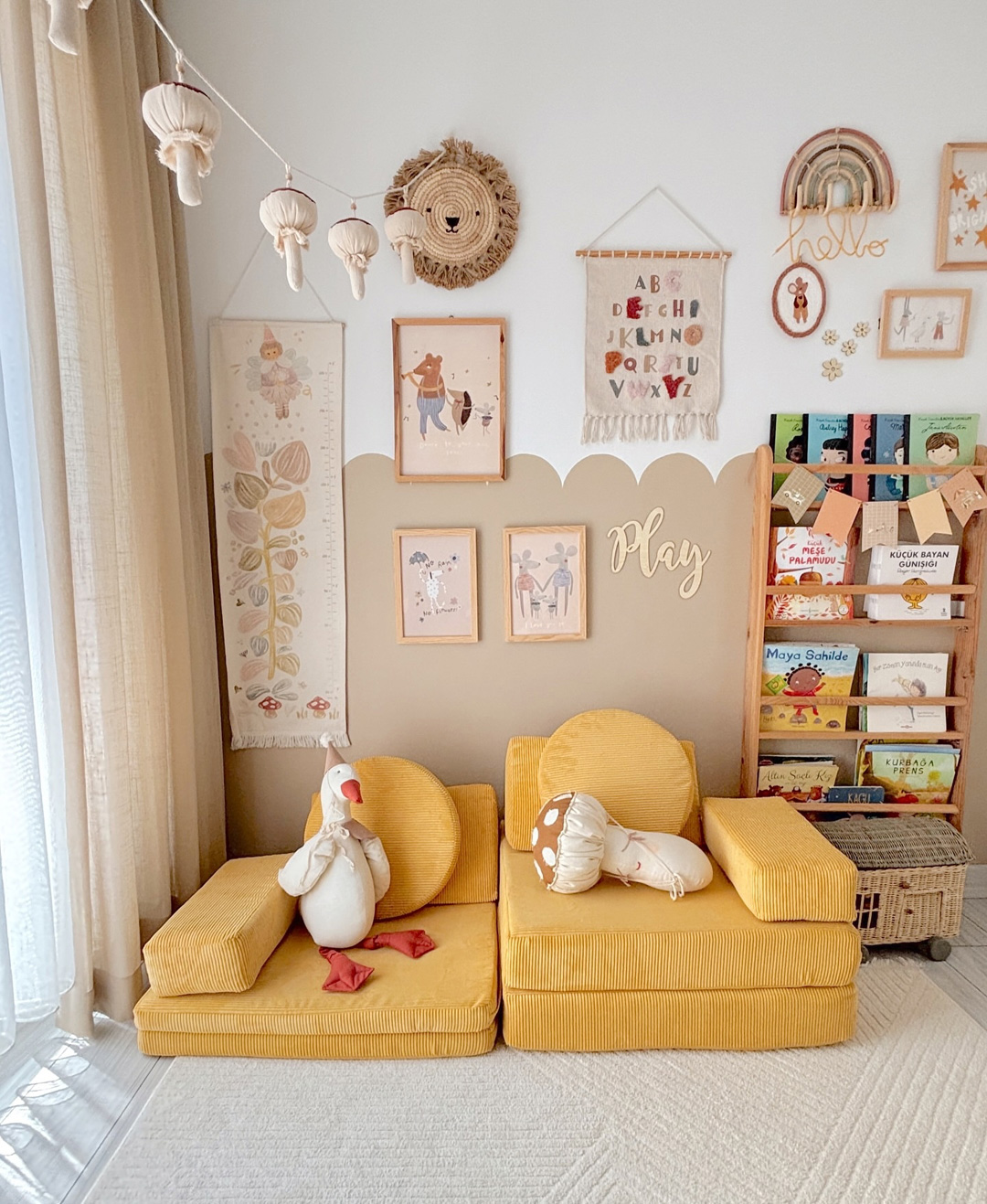
@busraaksoyblog
Choose the Right Furniture for Functionality and Comfort
The furniture in a child’s room should be functional and comfortable. A comfortable chair or cushion can make reading or studying more enjoyable. The right desk should be the right height for your child, and it should have enough space to work on projects, complete homework, or engage with educational materials. A clutter-free desk with plenty of storage will help keep the space organized, allowing your child to focus on the task at hand.
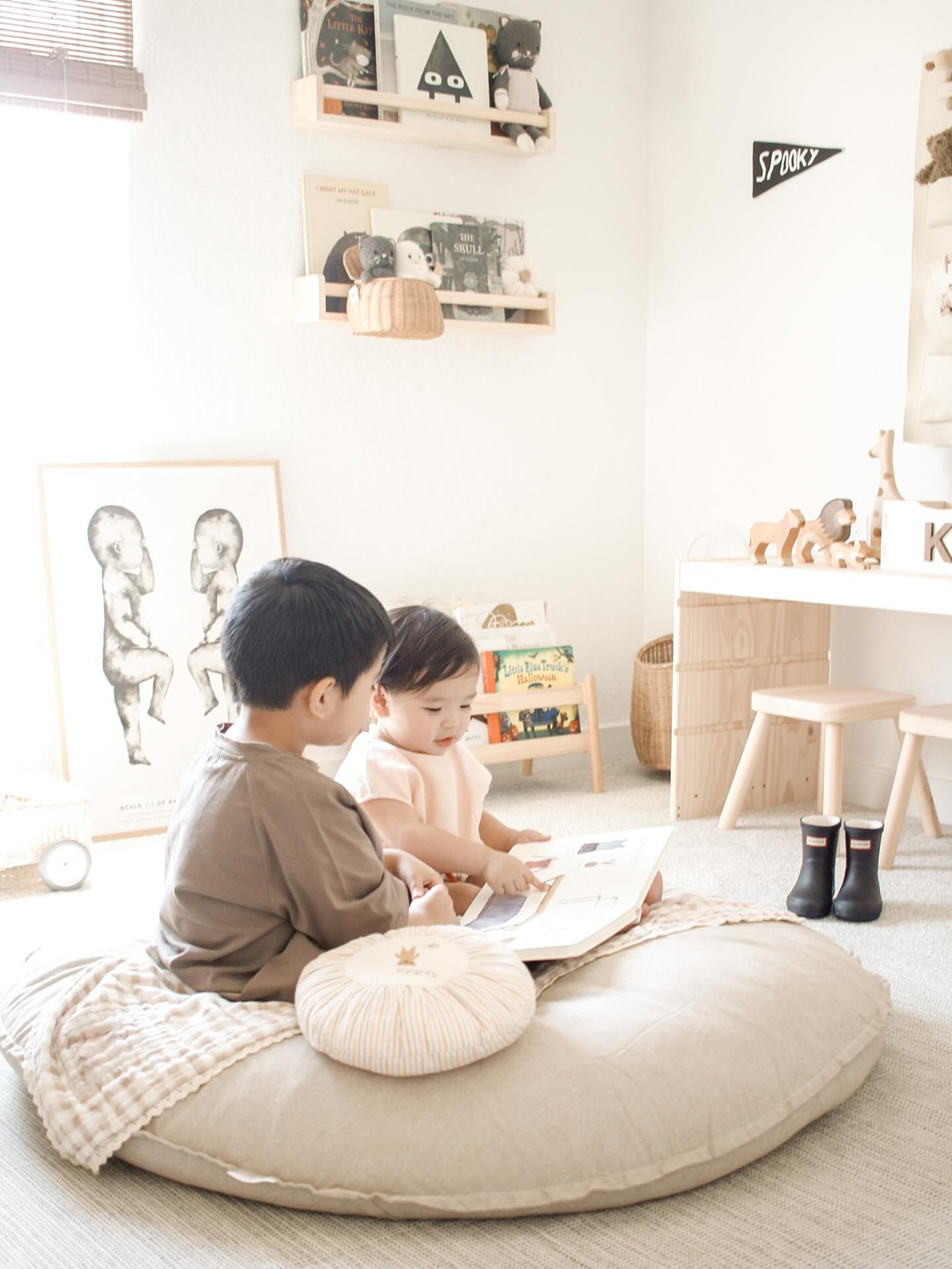
@glenngb_
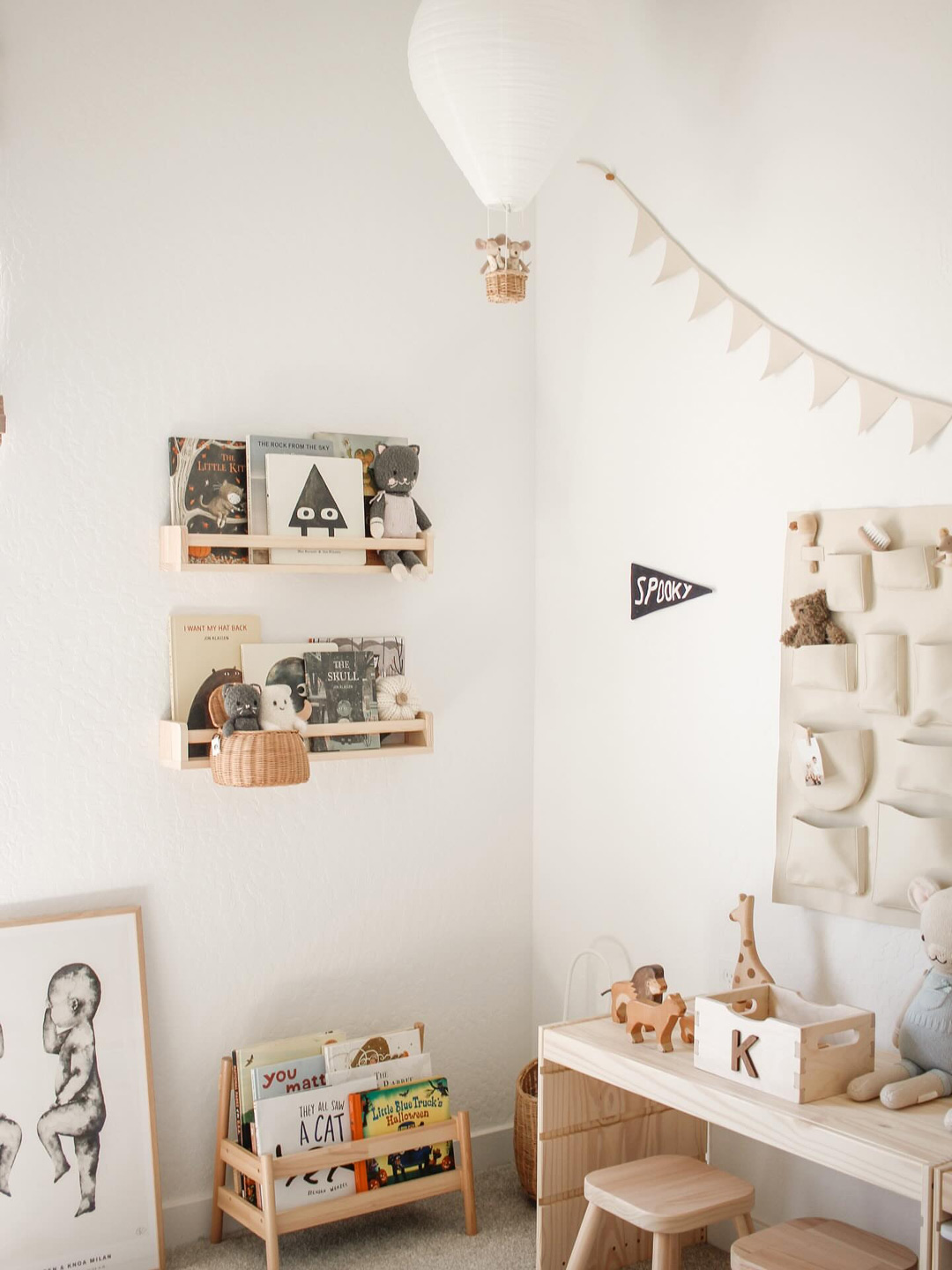
@glenngb_
Furniture should also serve a practical purpose while remaining visually appealing. Multifunctional pieces, such as storage ottomans or a desk with built-in shelves, can help maximize space and keep things organized. This is especially important for smaller rooms where every inch of space matters.
Bright and Inviting Colors
Color has a profound impact on mood and behavior, and the right color choices can help boost your child’s focus, creativity, and energy. Bright colors such as yellow, green, and blue are known to stimulate the mind and promote concentration. Blue, for example, is often associated with calm and focus, while yellow can spark creativity and positivity. Consider using these colors in accent walls, furniture, or even decorative elements to create a vibrant learning environment.
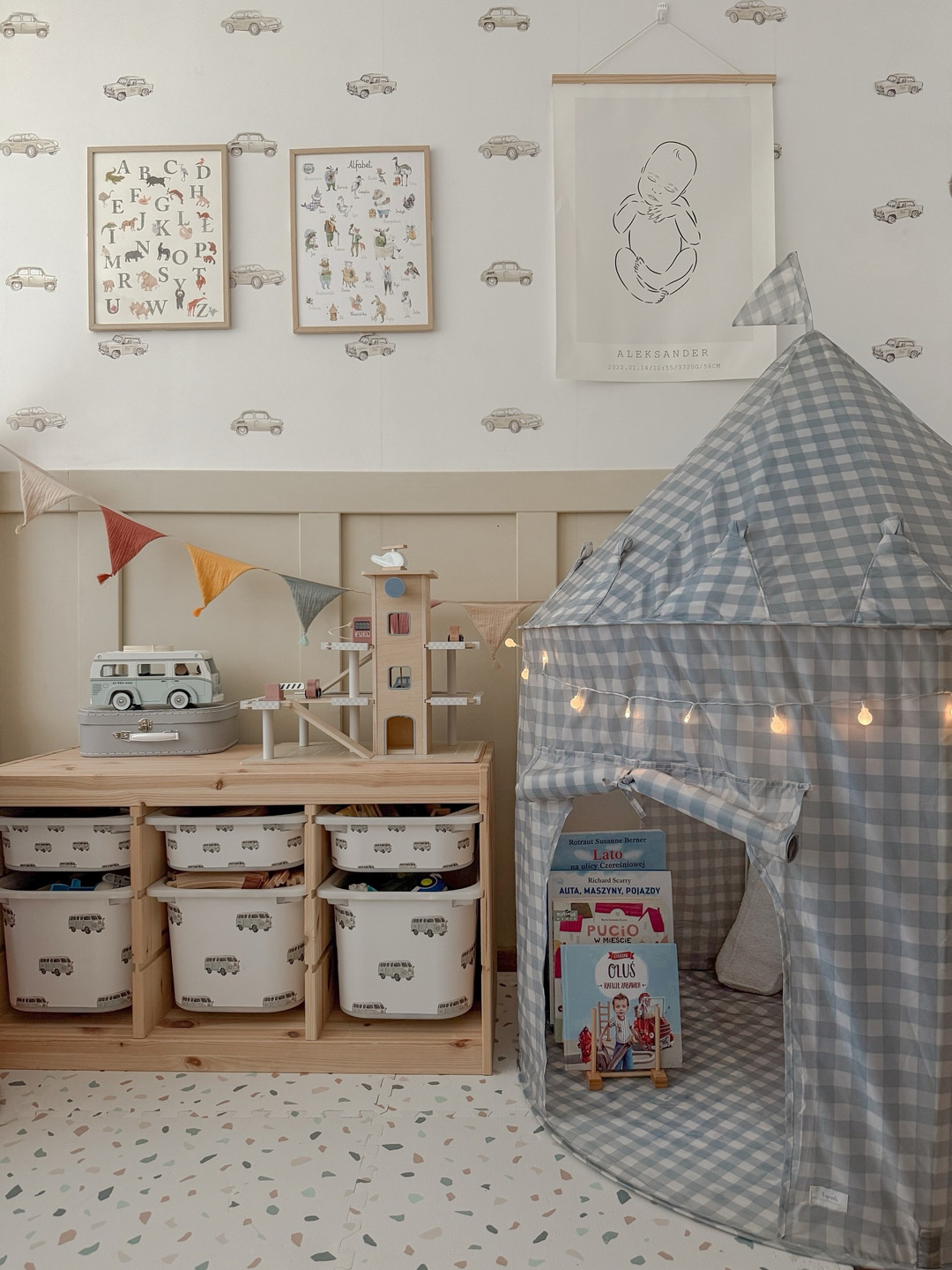
@iga_luk
For a more calming atmosphere, you can incorporate neutral colors like soft gray, beige, or pastel tones. These shades are ideal for creating a peaceful space that won’t be overly stimulating, making them great choices for a study area or quiet reading nook.
Bring Nature Indoors
Studies have shown that exposure to nature can improve focus, reduce stress, and enhance overall cognitive function. Bringing natural elements into your child’s learning space can help create a more engaging and calming environment. Consider incorporating plants into the room’s decor, or opt for natural materials like wood for furniture or shelving. Even a simple potted plant on a windowsill can make a difference in creating a more vibrant and natural atmosphere.
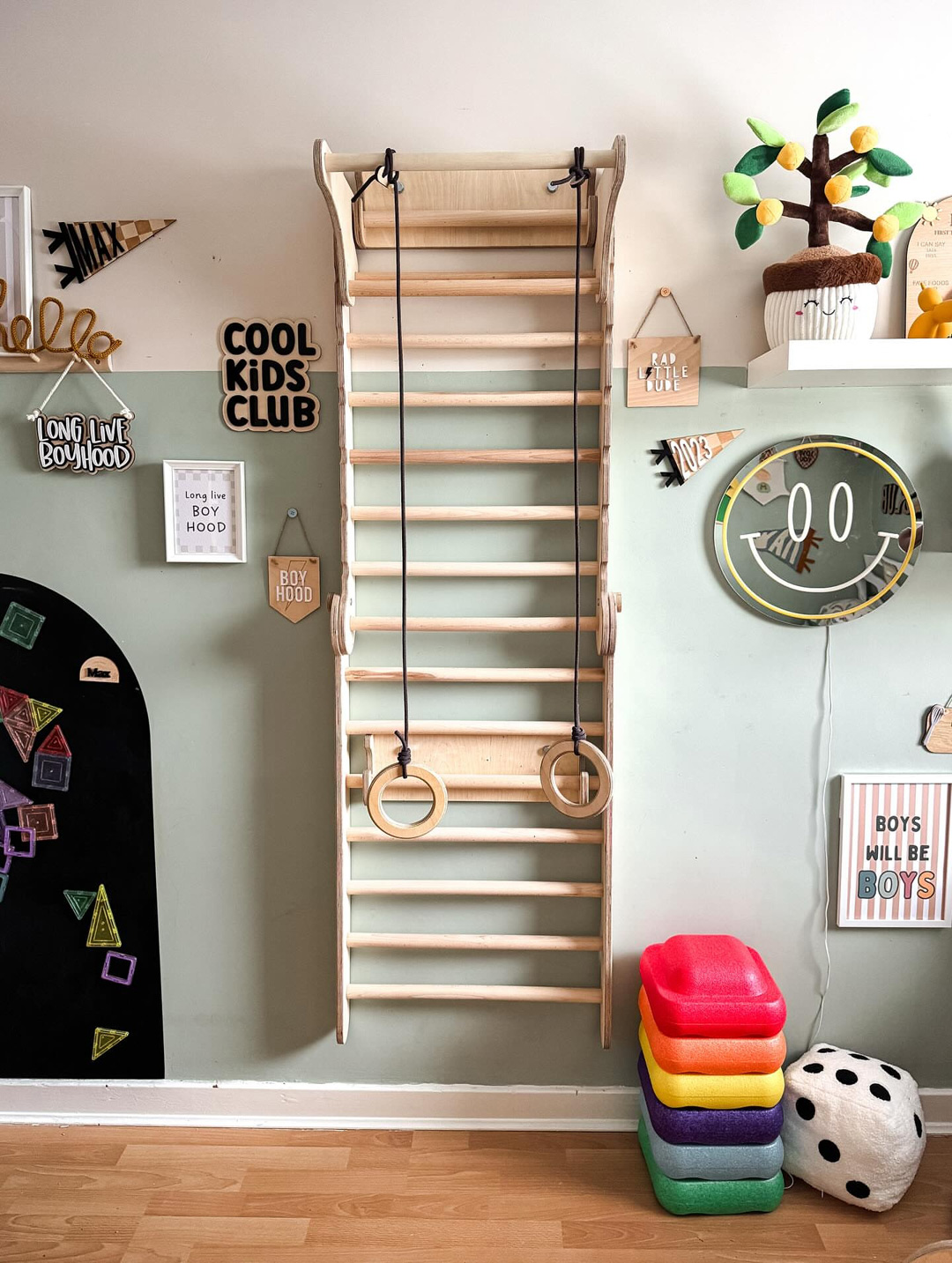
@kerri.andherkids
If your child has a favorite outdoor activity, like climbing, hiking or gardening, consider incorporating these interests into the room design with nature-themed decor. These personal touches will make the room feel more connected to your child’s world, sparking both interest and creativity.
Incorporating Educational Resources
An often overlooked aspect of creating a thoughtful learning space is incorporating educational resources that will inspire your child to learn outside the classroom. Books are an obvious choice, but there are also educational games, puzzles, and interactive toys that can complement their learning. An organized bookshelf filled with inspiring storybooks, such as those from Tuttle Twins, will not only serve as a functional storage space but also ignite curiosity.
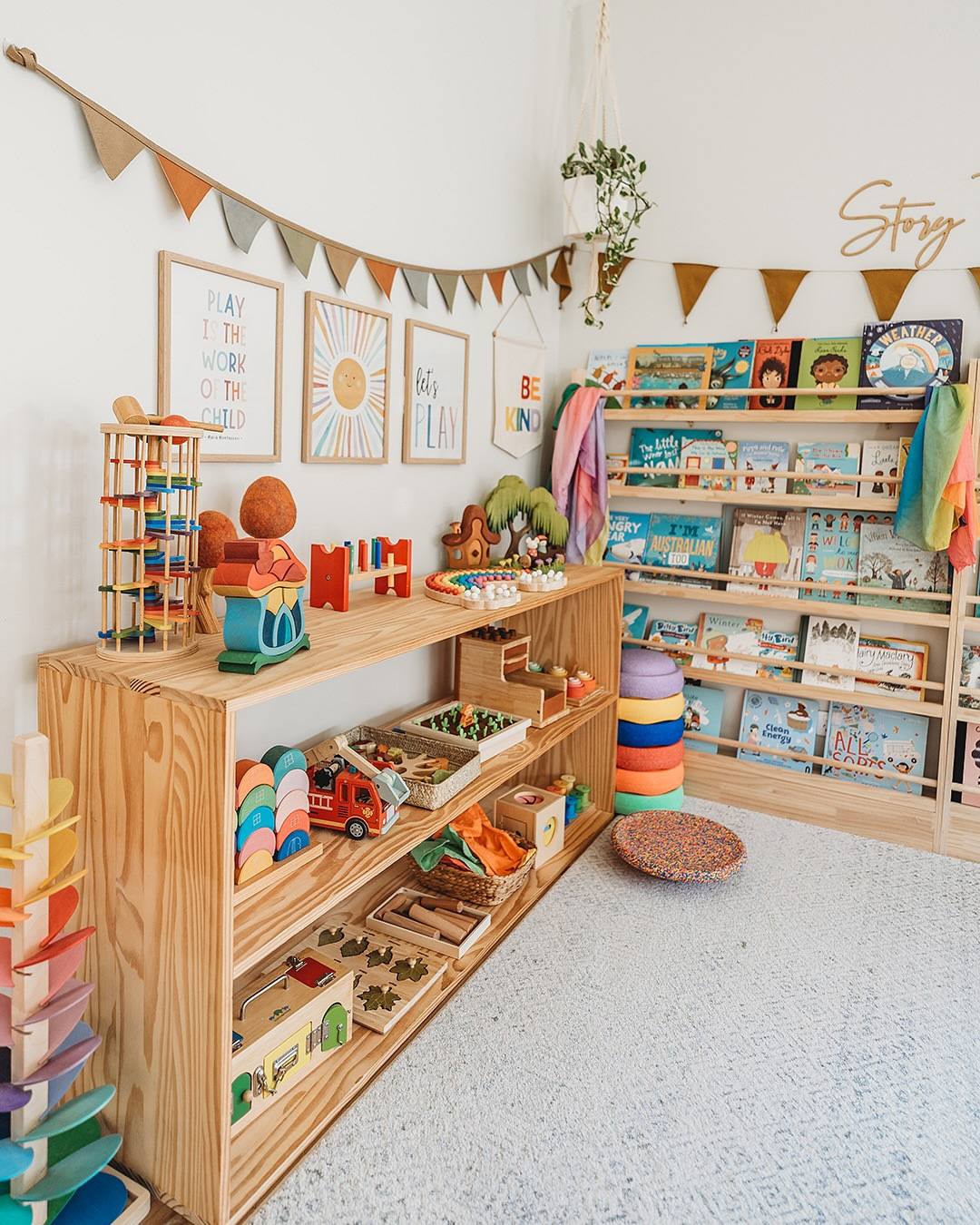
@gemma.leigh.r
In fact, materials that introduce complex concepts in a fun and engaging way, like stories about economics or history, can be a perfect addition to a child’s room. By pairing educational resources with room decor, you create a space that inspires active engagement with learning, while subtly reinforcing important life lessons.
Moreover, there are digital tools and apps that can enhance your child’s learning experience. Many of these tools can be integrated into the room’s design, whether through a tablet stand for interactive learning apps or educational videos that can be played during designated study hours.
Lighting and Ambiance
The right lighting is essential for creating a functional learning space. Poor lighting can strain the eyes and make it difficult for your child to concentrate. Natural light is always a great option, so try to position the desk or reading nook near a window to let in plenty of daylight. If natural light is limited, invest in adjustable lighting that can be tailored to different activities.
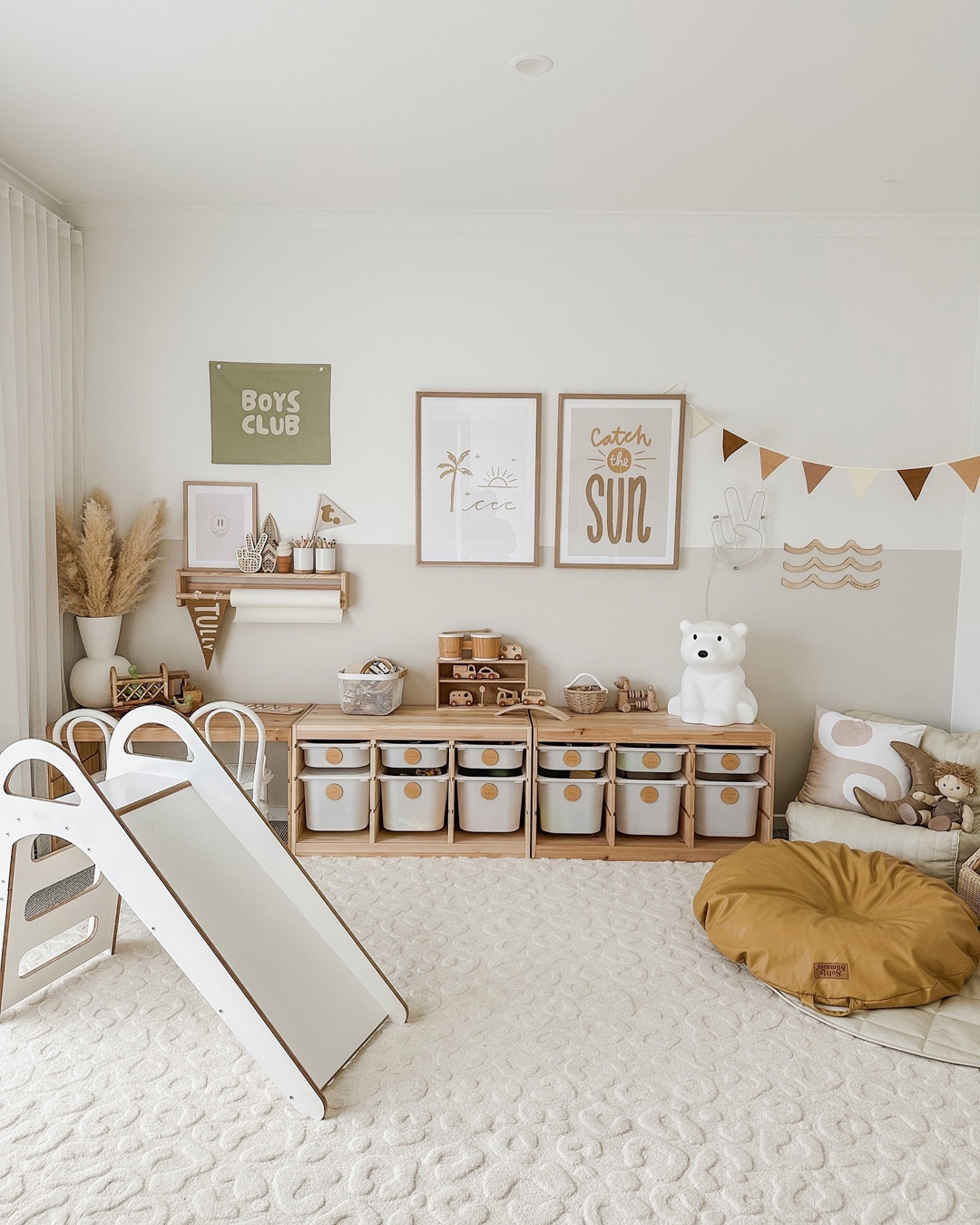
@our.home.trio
Consider adding a desk lamp with a warm, soft glow to create a cozy, inviting atmosphere. Overhead lighting should be bright enough to support study sessions without being harsh. Adjustable lighting can also help set the right mood for different activities—whether that’s reading, studying, or simply relaxing.
Final Thoughts
Creating a thoughtful learning space for your child requires more than just picking out furniture and decor. It’s about designing an environment that encourages curiosity, fosters concentration, and nurtures a love for learning. By considering your child’s needs, interests, and developmental stage, you can create a space that supports their growth, all while maintaining functionality and style. In doing so, you’ll be setting the foundation for a positive, enriching environment that supports your child’s academic and personal development.

